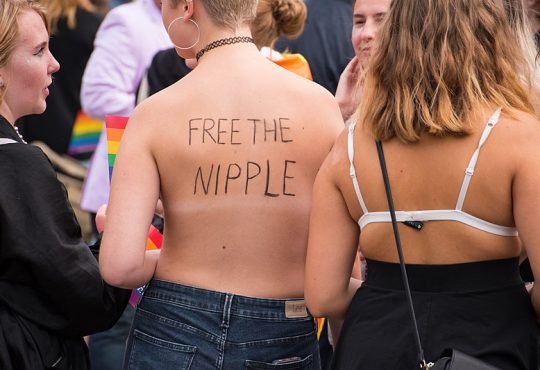Modern concepts of gender are expanding at an increasing rate to include people who do not feel comfortable as exclusively “female” or “male.” Germany recently added “X” as a third gender option on birth certificates, and Sweden introduced the gender neutral pronoun “hen” around 1960.
In order for notions of non-binary gender to be fully embraced, though, we must develop a vocabulary to talk about it with depth and complexity.
People unfamiliar with trans*, third gender and genderless identities may feel confused or even threatened when it comes to speaking with respect for non-binary individuals. In order to alleviate some of the tension surrounding conversations of non-binary gender, this article will illustrate the wide variety of pronoun options one can use.
To make the transition easier, the English language already has several genderless pronouns. For example, I used “one” in the previous paragraph to address an individual of any gender. “They” is also a familiar term, and has evolved to be used in the singular as well as the plural.
“S/he” and “he or she” have also been used to attempt to include everyone, but these constructs can be limiting for people who identify outside of the gender binary (male/female). “It” is also considered a gender-neutral pronoun, but this can be offensive to use in reference to people, as “it” often connotes inanimate objects, not people.
There is a long list of ways that trans* people can identify (for a selection, see the list at the end of the article). For as many modes of gender expression as there are, there are nearly as many ways of addressing non-binary people. Many of these pronouns have been invented in the last century as a way for trans* people to create identities for themselves that feel truly authentic to who they are.
It is important to remember that the most respectful way to address someone, if you are unsure of what pronouns they use to refer to themselves, is to simply ask, “What are your preferred pronouns?” Several Puget Sound students have said that some professors and club leaders are including this question in their beginning-of-the-year “getting to know you” introductions, in an effort to create a safe space for all students.
“Ze” and “hir” are two common pronouns that trans* people may embrace. To demonstrate their usage, in contrast to the sentence “She told him about her life and herself,” one would say, “Ze hold hir about hir life and hirself.” The pronunciation of “ze” may be self-explanatory—[zee]—but “hir,” which looks like it’s pronounced [hur] is actually pronounced [heer] like the word “here.” This is inclusive, but can be easily misunderstood as “her.”
Other options are “ze” and “zir,” like “Ze told zir about zir life and zirself.” Another is the Spivak pronoun, “E,” named after Michael Spivak, who first coined these pronouns. They’re used, “E told em all about eir life and emself.” “Ne,” “ve,” and “xe” are some alternative pronouns listed at genderneutralpronoun.wordpress.com. They can be used by saying “Ne/ve/xe told nem/vem/xem about nir/vir/xir life and nemself/vemself/xemself.”
“Yo” is an interesting pronoun that has gained foothold in slang use, and it has arisen almost by accident as a gender neutral pronoun. Most commonly, it is used as an attention getter (“Yo, come over here”) but it can also be used like, “Yo came over after school.” As far as I can tell, though, no substantive efforts have been made to use “yo” outside of nominative and accusative cases (that is, as the subject or object of a sentence).
Despite the wide array of possibilities, some may dislike the use of pronouns altogether and may insist that you use their name in lieu of any other identifying words.
If all of these new words have your head spinning, not to worry. Simply being aware that there are lots of different ways of addressing non-binary people can help you to be more respectful in your conversations in the future.
Again, if you’re unsure of how to address someone, politely ask, “What are your preferred pronouns?” Some might be offended, but more often than not, the person you asked will be thankful that you are making an attempt to include their identity in your vocabulary.
Note: the * at the end of trans* is used to indicate that trans* is an umbrella term that includes a multitude of non-binary individuals including transmen and transwomen, transvestite, transsexual, genderless, genderfluid, genderfuck, genderless, agender, bi-gender, non-gender, third gender, two spirit, etc.
Are there any other pronouns you’d like this campus to be aware of? Send an email to trailheyyou@pugetsound.com with your input on how to make our lexicon more inclusive.





